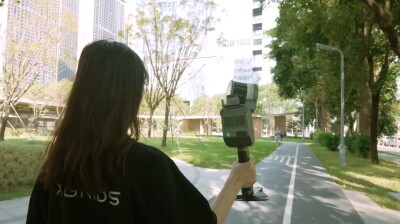If you’re in the laser scanning business, you know who Ben Kacyra is. Or you’ve been living under a rock. Now, however, a whole raft of new people know who Kacyra is, thanks to the TED talks, which just posted Kacyra’s address to TED Global back in July. I’ve written before about how mainstream understanding of laser scan technology – even if no mainstream person ever actually operates a laser scanner – is a good thing for the industry (Edit: Even CNN has picked the video up and posted it to its site.). You never know who’s going to be a CEO someday, and those who think 3D data capture is worthwhile and valuable to an organization are obviously to the benefit of people performing such services and selling such devices.
But what’s really cool about Kacyra’s talk, and you can watch it below, is that he couples the value of 3D data capture with the value of history and storytelling, a pair of pursuits that are close to my own heart. First, take a gander. The video is about 12 minutes long:
Kacyra’s message is pretty self-explanatory, and he doesn’t need me to interpret for him, but a few of points really stood out for me:
• I love how he refers to scanners as “these babies.” Part of the coolness of laser scanning is very much the technology, and when Kacyra refers to laser scanners like rocket engines or cool cars or neat gadgets it drives home that part of the attraction. These scanner ARE cool. They shoot out a million laser beams a second (or 40,000 – phase-based, time-of-flight, it doesn’t really matter for these purposes). They make beautiful pictures called point clouds. If we can’t get kids interested in this industry we’re not trying very hard.
• I notice Kacyra uses the words, “reality capture industry.” I’m not sure if he’s taking a cue from Autodesk or the other way around, but at some point we’re all going to have to agree on what this industry is called. We tend to use “3D data capture,” but I’ll agree that “reality capture” has a bit more swagger to it. Still, I think the 3D part is more than a little important. Something to ruminate on.
• Kacyra talks about “losing the sites and the stories faster than we can physically restore them.” For a lit major like myself, those are music to my ears. It’s not just about the physical objects. Sure, it’s great that we can use the 3D data to restore sites once they’ve been damaged, but it’s also about preserving the stories that these sites have wrapped up inside them. Kacyra’s right to be worried about “our collective memory,” not only because of the truth of that old saying about being doomed to repeat forgotten history, but because having a communal sense of identity holds society’s together. I got scolded a bit in Europe when I talked about how nationalism can be a good thing (they’ve had a bit of a rougher time with nationalism’s ill effects in Europe than we’ve had here in the States), but maybe I wasn’t using the right words. It’s good for people, regardless of the borders that contain them, to feel like they’re all working toward some kind of larger common goal. That instinct comes out of a feeling that we’ve all got some kind of collective common history. If that history is erased, along with the evidence of it in the form of historical sites, there’s less holding society’s together, and more incentive for people to take on the attitude that it’s every person for him- or herself. That can’t be a good thing.





